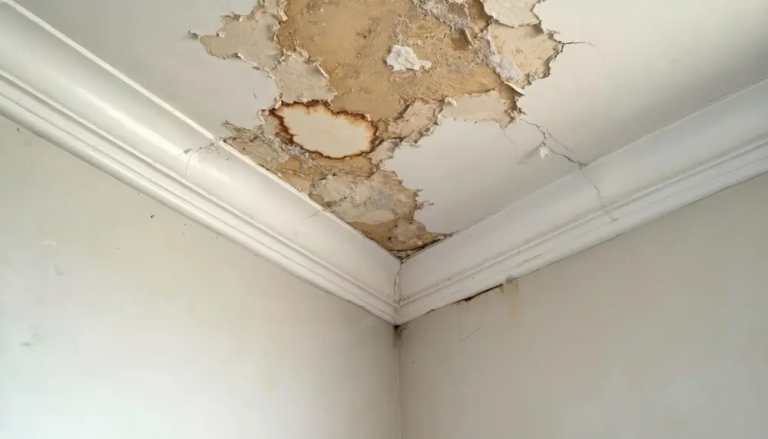How Roof Replacements Can Improve Indoor Air Quality and Comfort?

When it comes to home improvements, many homeowners prioritize kitchens, bathrooms, or landscaping. However, one of the most critical—and often overlooked—upgrades is your roof. Investing in timely roof replacements not only protects your home structurally but can significantly enhance indoor air quality and overall comfort. This is especially important in regions with fluctuating climates where humidity, allergens, and temperature regulation all play a role in daily life.
Many don’t realize how closely connected a home’s roof is to its interior environment. A failing roof can allow moisture intrusion, encourage mold growth, and reduce insulation efficiency—all of which contribute to poor air quality and uncomfortable living conditions. As building science evolves, roofing systems have become increasingly advanced, with materials designed to insulate more effectively, seal out pollutants, and regulate airflow more efficiently.
The Link Between Roofing and Air Quality
One of the primary ways your roof affects air quality is through its control of moisture. An old or damaged roof can allow rainwater to seep in, which can penetrate insulation and drywall, potentially causing damage. This trapped moisture becomes a breeding ground for mold and mildew, two major contributors to poor indoor air quality. When mold spores circulate through your HVAC system, they can aggravate allergies, asthma, and other respiratory issues.
Modern roofing systems are designed with moisture barriers and proper ventilation in mind. These features help maintain a balanced indoor environment and minimize dampness. With a well-executed roof replacement, you’re less likely to experience musty smells, mold spores, or stagnant indoor air.
Another concern is outdoor pollutants. Airborne particulates, dust, and debris can easily infiltrate homes with poorly sealed or deteriorating roofs. Upgrading your roof with high-quality underlayment and flashing, along with tightly sealed ridge vents, creates an effective barrier against outside contaminants.
Improved Ventilation and Temperature Regulation
Good ventilation is essential for both comfort and health. Poor ventilation can cause your attic to trap heat and moisture, which then seeps into your living space. A properly replaced roof includes ridge vents, soffit vents, and sometimes even smart ventilation systems that promote consistent airflow. This helps expel warm, moist air while drawing in fresh air, which is critical for maintaining clean, breathable indoor air.
A poorly ventilated attic can also increase indoor humidity levels. High humidity makes your home feel warmer than it is and provides the perfect environment for dust mites and mold. By improving attic airflow during a roof replacement, homeowners often notice reduced humidity, fewer allergy triggers, and better sleep quality.
Enhanced Comfort Through Insulation and Energy Efficiency
Aside from air quality, comfort is another huge benefit of upgrading your roof. Older roofs tend to be less energy-efficient due to worn-out materials and outdated installation methods. This leads to drafty rooms, cold spots in winter, and overheated spaces during the summer.
Today’s roofing materials include advanced insulation options such as radiant barriers and reflective shingles, which help stabilize indoor temperatures by reducing heat transfer. A new roof keeps your home warmer in winter and cooler in summer, reducing the strain on your HVAC system and resulting in a more pleasant indoor environment year-round.
Long-Term Savings and Health Benefits
While roof replacements require an upfront investment, the long-term savings make them worthwhile. Enhanced energy efficiency can significantly lower utility bills. More importantly, improved air quality reduces healthcare expenses associated with respiratory illnesses and the management of allergies.
In homes where children, elderly residents, or individuals with compromised immune systems live, indoor air quality becomes even more critical. By eliminating sources of mold, allergens, and contaminants through a proper roof upgrade, you create a safer and healthier space for your entire household.
Additionally, some modern roofing materials are eco-friendly and non-toxic, unlike older materials that may contain harmful substances like asbestos or lead paint. A full roof replacement provides the opportunity to choose greener options, thereby further contributing to a healthier living environment.
Final Thoughts
Replacing your roof isn’t just about aesthetics or stopping leaks—it’s about creating a cleaner, more comfortable, and healthier home. From sealing out pollutants and reducing moisture to improving insulation and airflow, roof replacements offer multiple indoor benefits that go beyond the surface. If your current roof is outdated or showing signs of wear, upgrading it may be one of the best steps you can take to enhance your home’s overall living quality.





